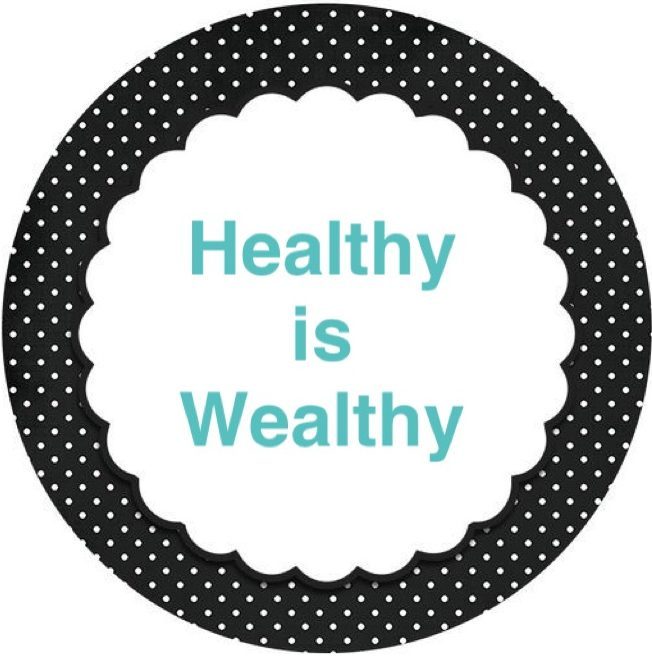
Lactose Intolerance
Lactose intolerance is the lack of the enzyme lactose, which causes failure in the digestion process of lactose. Lactose is the sugar in milk. Lactase deficiency is common throughout the world. Lactose intolerance main cause is unknown, but mostly it is caused by genetic factors.
Symptoms occur after the ingestion of lactose. Some of which are abdominal pain, bloating, diarrhea, or flatulence.

Malabsorption of lactose grade differs between individuals. Small amounts of lactose can be ingested without symptoms in most of the lactose-intolerant patients.
Treatment:
Lactose intolerance can be treated with controlling lactose in the dietary intake.
A lactose-intolerant patient should avoid products containing lactose such as, milk, butter, cream sauces, and food include milk. All kinds of animals’ milk contain lactose.
According to that, a lactose-intolerant patient should include calcium in their diets. Fishes such as, sardines, salmon, and tuna are calcium-rich sources. Also, leafy green vegetables such as, kale, spinach, or broccoli, are rich-calcium source.

Also, lactase supplements can be added to the food containing lactose.
Yogurt is a diary product that contains lactose, yet it can be digested well. It can be digested because it contain Lactobacillus acidophilus.
Sherbet is an alternative for ice cream.
Soy milk, almond milk, rice milk, and coconut milk are alternatives for animals’ milk.
Coconut milk is similar to cow’s milk, but it is high in saturated fat.
References:
1. Gilliland S, Kim H. Effect of Viable Starter Culture Bacteria in Yogurt on Lactose Utilization in Humans. 2017.
http://www.sciencedirect.com/science/article/pii/S0022030284812606
2. Savaiano D. Lactose digestion from yogurt: mechanism and relevance [Internet]. Ajcn.nutrition.org. 2017 [cited 20 October 2017]. Available from: http://ajcn.nutrition.org/content/99/5/1251S.long
3. Suchy F, Brannon P, Carpenter T, Fernandez J, Gilsanz V, Gould J et al. NIH consensus development conference statement: Lactose intolerance and health. [Internet]. Europepmc.org. 2017 [cited 20 October 2017]. Available from: http://europepmc.org/abstract/med/20186234
4. Scrimshaw N, Murray E. The acceptability of milk and milk products in populations with a high prevalence of lactose intolerance. [Internet]. Ajcn.nutrition.org. 2017 [cited 20 October 2017]. Available from: http://ajcn.nutrition.org/content/48/4/1142.short
5. Lactose Intolerance [Internet]. Taylor & Francis. 2017 [cited 20 October 2017]. Available from: http://www.tandfonline.com/doi/abs/10.1080/07315724.2000.10718086
6. Swagerty J, Walling A, Klein R. Lactose intolerance. [Internet]. Europepmc.org. 2017 [cited 20 October 2017]. Available from: http://europepmc.org/abstract/med/12018807
Fight Breast Cancer
Breast cancer is a serious risk threatens women’s health throughout the world. It is the most common cancer in USA. According to Saudi Arabian National Cancer Registry, breast cancer is the most common cancer among women. There a lot of factors affecting breast cancer such as, age, gender, genetics, and relatives history. In the recent years, studies have shown an association between diet an breast cancer. Obesity has an important role in developing breast cancer. Also, diet plays role in fighting breast cancer and reducing the risk of it. High fat diet increases the risk of breast cancer. Foods containing omega-3 polyunsaturated fatty acids consumption decreases breast cancer risk. There is no strong association between breast cancer and carbohydrates. But consuming a lot of sugar and carbohydrates causes wight gain which can be followed by overweight or obesity.
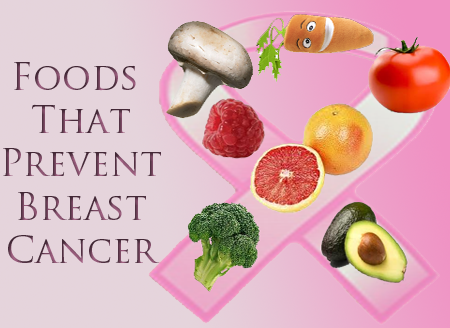
Researchers have shown some reduction in the risk of breast cancer associated with highly intake of soy products. Soy is a healthful food source. It is rich in protein, vitamins, minerals, and healthy fat, but it is low in carbohydrates. It plays role in the treatment of many diseases. It is found in tofu, edamame, soy milk, soy nut, and tempeh (traditional soy product in Indonesia).
According to the fiber ability to lower hormone estrogen in women, it is also effective in lowering breast cancer risk. Wheat bran, a good source of fiber, has an effect in preventing breast cancer.


Vitamin D status is inversely associated with breast cancer risk. A study has shown that vitamin D has an effect on modulating breast cancer cell growth. Vitamin D is found in red meat, liver, egg yolk, and oily fish such as, salmon and sardine.
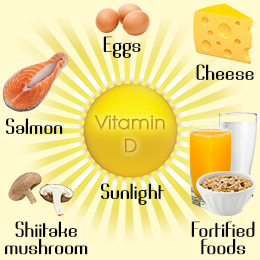
Studies have shown that women who consume high amounts of fruits and vegetables have lower risk of breast cancer than others. Dark, green, leafy vegetables, broccoli, kale, onions, peppers, and garlic can prevent breast cancer. Also, berries are effective in reducing the risk of breast cancer.
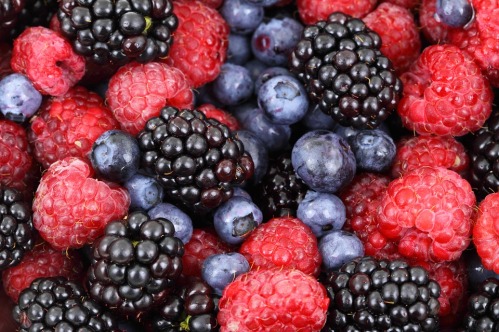
Maintaining body weight and following a healthy lifestyle are important in reducing the risk of breast cancer.

References:
1. Freudenheim J, Marshall J, Vena J, Laughlin R, Brasure J, Swanson M et al. Premenopausal Breast Cancer Risk and Intake of Vegetables, Fruits, and Related Nutrients. 2017. https://academic.oup.com/jnci/article/88/6/340/1004913/Premenopausal-Breast-Cancer-Risk-and-Intake-of
2. [Internet]. 2017 [cited 17 October 2017]. Available from: https://www.ncbi.nlm.nih.gov/pmc/articles/PMC3987815/
3. Can Food Reduce Your Risk of Breast Cancer? [Internet]. Breastcancer.org. 2017 [cited 17 October 2017]. Available from: http://www.breastcancer.org/tips/nutrition/reduce_risk/reduce_risk
4. Shaukat N, Jaleel F, Moosa F, Qureshi N. Association between Vitamin D deficiency and Breast Cancer. 2017. https://www.ncbi.nlm.nih.gov/pmc/articles/PMC5510119/
5. S A. Increasing prevalence of breast cancer among Saudi patients attending a tertiary referral hospital: a retrospective epidemiologic study. – PubMed – NCBI [Internet]. Ncbi.nlm.nih.gov. 2017 [cited 17 October 2017]. Available from: https://www.ncbi.nlm.nih.gov/pubmed/22661137
6. Albuquerque R, Baltar V, Marchioni D. Breast cancer and dietary patterns: a systematic review. 2017. http://onlinelibrary.wiley.com/doi/10.1111/nure.12083/full
7. Freudenheim J, Marshall J, Vena J, Laughlin R, Brasure J, Swanson M et al. Premenopausal Breast Cancer Risk and Intake of Vegetables, Fruits, and Related Nutrients. 2017. https://academic.oup.com/jnci/article/88/6/340/1004913/Premenopausal-Breast-Cancer-Risk-and-Intake-of
Artificial Sweeteners

Artificial sweeteners have been used widely recently. Artificial sweeteners are free calorie. They are used instead of sucrose which is 4Kcal/g. Artificial sweeteners can be effective for diabetic and obese people. According to the low-calorie content of non-caloric artificial (NAS) sweeteners, they are beneficial for reducing weight. Human consumption of NAS have been assessed safe by many different agencies world wide. Usually NAS are more sweet than sucrose. NAS are non-nutritive sweeteners, so they lack functional characteristics of sugar such as, bulking, binding, texturizing, and ferminting. There are many kinds of NAS, some of which aspartame, neotame, saccharin, acesulfame K, and sucralose.
Aspartame is one of NAS that has been used globally for more then 30 year. It is a synthetic combination of two amino acids (aspartic acid and phenylalanine). Aspartame breaking down produces aspartic acid, phenylalanine, and methanol. Methanol in huge amounts can cause toxins. It is 180 times sweeter than sucrose. According to various agencies, there is no association between aspartame and leukemia, haematopoietic neoplasms, pancreatic cancer, breast cancer, ovary cancer, and prostate cancer. Aspartame is used in many beverages and food. Aspartame is the sweetener used in diet soda. common side effects of aspartame are headache, dizziness, mood changes, and nausea. Also, people with phenylKetonuria are allergic to aspartame because of phenylalanine.
Neotame is 8000 times sweeter than sucrose. It is made of aspartic acid and phenylalanine, although it is not metabolized to phenylalanine. So people with phenylKetonuria can consume neotame.
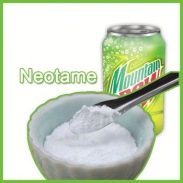
Saccharin is another kind of NAS, which is 500 times sweeter than sucrose. According to a research in 1970s, saccharin is tied to an increase incidence of bladder cancer. Sweet’N Low is a popular brand uses saccharin.

Refereces:
1. Marinovich M, Galli C, Bosetti C, Gallus S, La Vecchia C. Aspartame, low-calorie sweeteners and disease: Regulatory safety and epidemiological issues. 2017. http://www.sciencedirect.com/science/article/pii/S027869151300495X
2. GUTHRIE J, MORTON J. Food Sources of Added Sweeteners in the Diets of Americans. 2017. http://www.sciencedirect.com/science/article/pii/S0002822300000183
3. [Internet]. 2017 [cited 16 October 2017]. Available from: http://www.nature.com/nature/journal/v514/n7521/full/nature13793.html
4. [Internet]. 2017 [cited 16 October 2017]. Available from: https://www.cabdirect.org/cabdirect/abstract/19900396238
5. Kroger M, Meister K, Kava R. Low-calorie Sweeteners and Other Sugar Substitutes: A Review of the Safety Issues. 2017. http://onlinelibrary.wiley.com/doi/10.1111/j.1541-4337.2006.tb00081.x/full
6. GUTHRIE J, MORTON J. Food Sources of Added Sweeteners in the Diets of Americans. 2017. http://www.sciencedirect.com/science/article/pii/S0002822300000183
Ameera Altamimi
Address: 28091 Khushm Al Aan, 14282-6314 Riyadh, Saudi Arabia- +966582080231 -Altamimi031@ksau-hs.edu.sa
Personal Profile
None
Education
Clinical Nutrition Bachelor Degree in King Saud bin Abdulaziz University for health sciences. 2014/2019
Experience
Volunteer Experience
Work for 3 days in King Abdullah Specialized Children’s Hospital on February 2017
Work for 3 days in the International Saudi Health Informatics Conference at KSAU-HS- visitors management on April 2017.
Activities
None
Intermittent Fasting
One of the diet trends people were following recently is Intermittent Fasting (IF), which means reducing meal frequency. IF is a set period of time fasting to optimize the body. IF alters between fasting and feasting. IF does not mean changing food, it means changing time of eating. To simplify, IF is eating normal amount of food in shorter period. Fasting hours include sleeping hours. Meals frequency and timing has many benefits on the body. IF is associated with calorie restriction (CR) and weight loss.
IF has effects on insulin sensitivity, blood pressure, coronary heart disease, cholesterol, brain, lifespan, body weight, and sleeping. IF increases the body sensitivity to insulin, which controls blood sugar. Also, IF protects brain cells from routine damage. IF reduces weight, because body starts to burn fat for fuel. Due to the effect of IF on the fat burning hormones, IF is better than CR in maintaining muscle mass. IF decreases coronary heart disease risk factors. Studies on rats have shown that IF stops the progression of type I diabetic nephropathy. Also, rats show increase in plasma albumin, and HDL cholesterol. Furthermore, studies have shown that IF affects lifespan extension.
There are many types of IF diet plans. Choosing any one of the plans depends on an individual choice. The most popular plan is the 16:8 plan, which is 16 fasting hours and 8 eating hours. It is also called Lengains method. Another type is the 5:2 diet plan, which involves normal diet for 5 days of the week and 2 days fasting with one 500 calories meal. The third type is the alternate-day fasting, which means fasting one day with 500-600 calories meal followed by a normal diet day. Also, there is another diet method, which involves 24 hours fasting day once a week. In this plan, the rest days of the week are normal diet. Exercise is recommended to loose weight. Water, coffee, and non-caloric beverages during fast hours are allowed. Generally, it is preferable that women fast for 14 hours and eat for 10 hours because shorter fasts appeared to be more effective in women.



Reference:
1. Varady K. Intermittent versus daily calorie restriction: which diet regimen is more effective for weight loss?. 2017.
2. Anson R, Guo Z, de Cabo R, Iyun T, Rios M, Hagepanos A et al. Intermittent fasting dissociates beneficial effects of dietary restriction on glucose metabolism and neuronal resistance to injury from calorie intake. 2017.
3. [Internet]. 2017 [cited 4 October 2017]. Available from: https://www.ncbi.nlm.nih.gov/pmc/articles/PMC3680567/
4. [Internet]. 2017 [cited 4 October 2017]. Available from: https://www.ncbi.nlm.nih.gov/pmc/articles/PMC4516560/
5. MATTSON M, WAN R. Beneficial effects of intermittent fasting and caloric restriction on the cardiovascular and cerebrovascular systems. 2017.
Organic Food
Organic food is the food produced without artificial methods, which means that there are no chemical fertilizers, chemical food additives, and chemical pesticides are used. Organic food is not genetically modified or exposed to radiation. Organic food can be fruits, vegetables, crops, and animal products. Organic meats are hormones free. Which means that the animals were not injected with hormones or antibiotics. Organic food is beneficial for the environment. It has many benefits for soil, water, air and climate changes. Because of the previous factors, organic food is more expensive than conventionally-grown food. However, there is an increase tendency towards organic food consumption recently.
Organic products marketing lack nutritional content information. Many consumers assume that the natural way of producing organic food provides a greater nutritional quality. While the studies have not shown any evidence that proves the difference between organic and non-organic food in nutritional quality. Few small differences can be found in contents of water, vitamin C, and nitrate. Where vitamin C is higher in organic food compared to conventionally-grown food. Also, water content in some conventionally-grown food is higher compared to organic food.
A study among four regions of Saudi Arabia, the center, east, west, and north, has shown that the most consumers of organic food in Saudi are in the center region. The least consumption of organic food is the north region.
To conclude, organic food defines how ingredients were created, prepared, and raised. So, not all organic food are healthy food. Organic food does not provide a healthier or higher nutrients than conventionally-grown food. Organic food is environmentally friendly. Also, organic food is higher in price than conventionally-grown food. There are some shortage in studies comparing the difference in nutritional quality between the two methods on human health. Enjoy the healthy organic food.
References:
1. [Internet]. 2017 [cited 27 September 2017]. Available from: http://world-food.net/download/journals/2013-issue_1/2013-issue_1-food/44.pdf
2. CM W. Nutritional quality of organic food: shades of grey or shades of green? – PubMed – NCBI [Internet]. Ncbi.nlm.nih.gov. 2017 [cited 27 September 2017]. Available from: https://www.ncbi.nlm.nih.gov/pubmed/12002790
3. [Internet]. 2017 [cited 27 September 2017]. Available from: https://www.cambridge.org/core/services/aop-cambridge-core/content/view/FFE1784B44530E4F9C828A265C776ABB/S0029665102000058a.pdf/nutritional_quality_of_organic_food_shades_of_grey_or_shades_of_green.pdf
4. Magkos F e. Organic food: buying more safety or just peace of mind? A critical review of the literature. – PubMed – NCBI [Internet]. Ncbi.nlm.nih.gov. 2017 [cited 27 September 2017]. Available from: https://www.ncbi.nlm.nih.gov/pubmed/16403682
